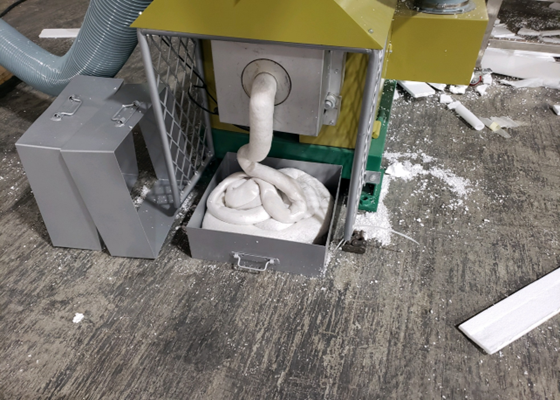Polystyrene densifier can prevent polystyrene dust from further turning into microplastics and causing environmental pollution
Do you know what microplastics are? In a narrow sense, microplastics are plastic particles less than 5 mm in diameter. Broadly speaking, scientists tend to regard microplastics as a complex, including both the plastic polymer particles themselves and the chemical additives contained in the plastic, such as plasticizers, flame retardants, antioxidants, etc., as well as microplastics Chemical pollutants adsorbed in the environment and biofilms attached to their surfaces. The products most likely to produce microplastics include expanded polystyrene. This material is composed of small beads and is easily broken. When placed in the natural environment, these small beads will break down under the influence of natural conditions. Continue to break into finer powder, which becomes what we call microplastics.
.png)
Scientists have detected microplastics in human blood, lungs, and breast milk. It may be difficult for microplastics to be absorbed through the skin. However, through the intake of food and drinking water, the human body may directly ingest microplastics orally. After these microplastics pass through the gastrointestinal digestive system, most of the plastic particles will eventually be excreted through feces. Currently, scientists predict that microplastics will cause harm to the human body, but no one knows whether they will cause more serious safety hazards, so we should avoid them. The indiscriminate production of microplastics.

In fact, in the production process of polystyrene products, not only expanded polystyrene scraps are produced, but polystyrene dust is also produced during the cutting and polishing processes, which is also one of the sources of microplastics. If this If polystyrene dust is not properly disposed of, if it is scattered into the natural environment, it will cause serious environmental pollution. GREENMAX polystyrene densifier can recycle both waste scraps and polystyrene dust. We recommend putting the dust and scraps into the crushing bin of the polystyrene densifier together, and then crushing, heating, melting and extruding them together. This is better than hot-melting polystyrene dust alone. Recycling with polystyrene densifier can compress polystyrene to one-90th of its original volume, and the ingots produced in this way are highly recommended and are not easily scattered, effectively avoiding environmental pollution. At the same time, compression is also an important step in recycling polystyrene.

